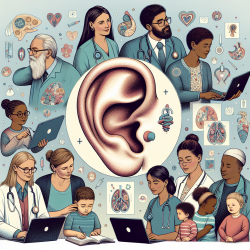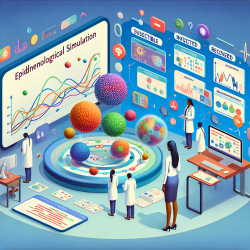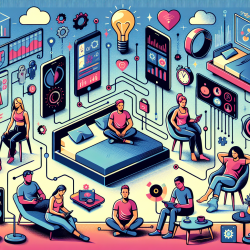Introduction
In today's fast-paced digital age, mobile health (mHealth) apps have emerged as a promising tool for promoting sustainable lifestyle changes among adolescents. However, the challenge remains in designing these apps to ensure meaningful and sustained user engagement. A recent study, "mHealth app features that facilitate adolescent use for lifestyle management, and are endorsed by caregivers and health care providers," sheds light on the key features that can drive the adoption and long-term use of mHealth apps among adolescents.
Key Findings from the Research
The study utilized inductive thematic analysis of qualitative data from focus groups, including adolescents, their caregivers, and health care providers. The findings reveal several critical features that enhance the appeal and utility of mHealth apps:
- Look and Feel: Aesthetic appeal, including bright colors and user-friendly interfaces, is crucial for attracting adolescents.
- Customization: Personalized goal setting, data tracking, and monitoring are vital for engaging adolescents in continued app use.
- Educational Information: Providing recommendations for healthy snacks and exercises can encourage sustainable health behaviors.
- Integration with EHR: Features that allow users to export health data to health care providers can enhance the app's value.
- Gamification: Incorporating game elements like rewards and leaderboards can motivate adolescents to maintain healthy behaviors.
- Social Interaction: Facilitating social interactions and friendly competition can foster a sense of community and encourage app use.
Implications for Practitioners
For practitioners working with adolescents, these findings offer valuable insights into designing and recommending mHealth apps that resonate with young users. By focusing on features that adolescents find engaging and useful, practitioners can promote better health outcomes. Moreover, involving caregivers and health care providers in the app development process ensures that the apps meet the needs of all stakeholders involved in adolescent health care.
Encouraging Further Research
While the study provides a solid foundation, further research is needed to explore the psychological aspects of gamification and its role in promoting positive health behaviors. Additionally, understanding the impact of social interactions within mHealth apps can offer deeper insights into fostering sustained app use.
Conclusion
The integration of user-friendly features, educational content, and social elements in mHealth apps can significantly enhance their appeal to adolescents. By leveraging these insights, practitioners can better support adolescents in managing their health and achieving positive lifestyle changes.
To read the original research paper, please follow this link: mHealth app features that facilitate adolescent use for lifestyle management, and are endorsed by caregivers and health care providers.










